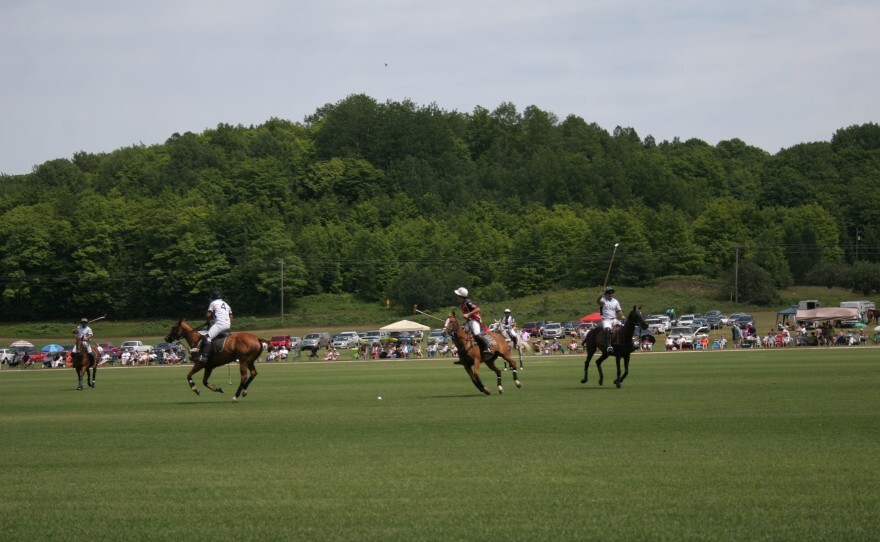Northern Michigan’s lakeshore climate is perfect for growing cherries, apples and other fruits. But Mason Lampton says it’s also perfect for his favorite pastime: playing polo. The Georgia resident realized the cooler summer temperatures were much more suitable for polo than the 100 degree heat down south.
One year, as he was summering in Harbor Springs with his family, he saw an old potato field in nearby Bliss Township. He bought the field but instead of planting potatoes, decided to play polo. It took over a year to get the field graded, irrigated and in playing condition.
Now, the Bliss Polo Club is about to open its 11th year of polo in northern Michigan on Sunday afternoon.

Mason Lampton grew up around horses in Louisville, Kentucky. He started to play polo when we was about 12 years old and more than 50 years later, Lampton still saddles up.
“I should be better,” he says laughing. “I’m in the twilight of my mediocre career right now, but I’ve had a ball playing.”
When Lampton decided to bring polo to northern Michigan, he says people called him crazy. But now, teams come from as far away as Texas and South Carolina to play at the beautiful location in Bliss. And hundreds of curious spectators turn out to watch the free matches.
What is it?
If you’re not familiar with how polo is played, there’s a simple way to describe it.
“Polo is kinda like ice hockey on horseback,” says Dana Fortugno, a professional umpire with the U.S. Polo Association.

There’s four mounted players to a team. Those players use long mallets to try and hit a baseball-sized ball in-between two goal posts at either end of the field. The field is almost large enough to fit nine football fields inside of it. The team that scores the most goals, wins.
Fortugno says his basic job is to keep the game flowing and everybody safe. For instance, when a player has possession of the ball, they have the right of way to keep traveling in that direction. If another rider comes too close to cutting them off, the umpire calls a rule violation.
Each polo match is broken up into six periods called chukkars. Each chukkar lasts about 7 minutes. Typically, players will change horses every chukkar to keep them fresh and not overworked.
That means every polo player has at least 6 horses.
Ken Grew comes regularly to watch the polo matches in Bliss. Standing on the sideline, he says he’s amazed by the combination of man and horse working in tandem.

“The ability of the rider to be able to take the horse and work together with them like they’re one,” Grew says. “It’s just an awesome sight.”
The fans do more than just cheer, too.In between the third and fourth chukkar, there’s a short half-time. That’s when fans are encouraged to step onto the field of play, and stomp the divots made by the horses and the mallets. Stomping the divots helps put the field back together, and also makes the ball roll more consistently. Judy Meredith has been coming to watch polo in Bliss for three years.
“Stomp the divots,” she explains. “Just make sure you don’t stomp anything steaming.”
Polo horses are generally thoroughbreds retired from the racetrack. On a full gallop they can reach speeds of over 30 miles an hour. It’s a dangerous, impact sport.

But that’s not enough to keep Mason Lampton away, even though he's now well into his 70's.
He’s planning on playing again this year, as the Bliss Polo Club kicks off its 11th season on Sunday. For the schedule, updates and more details, visit the Bliss Polo Club Facebook page.
A version of this story was originally published in 2016.



